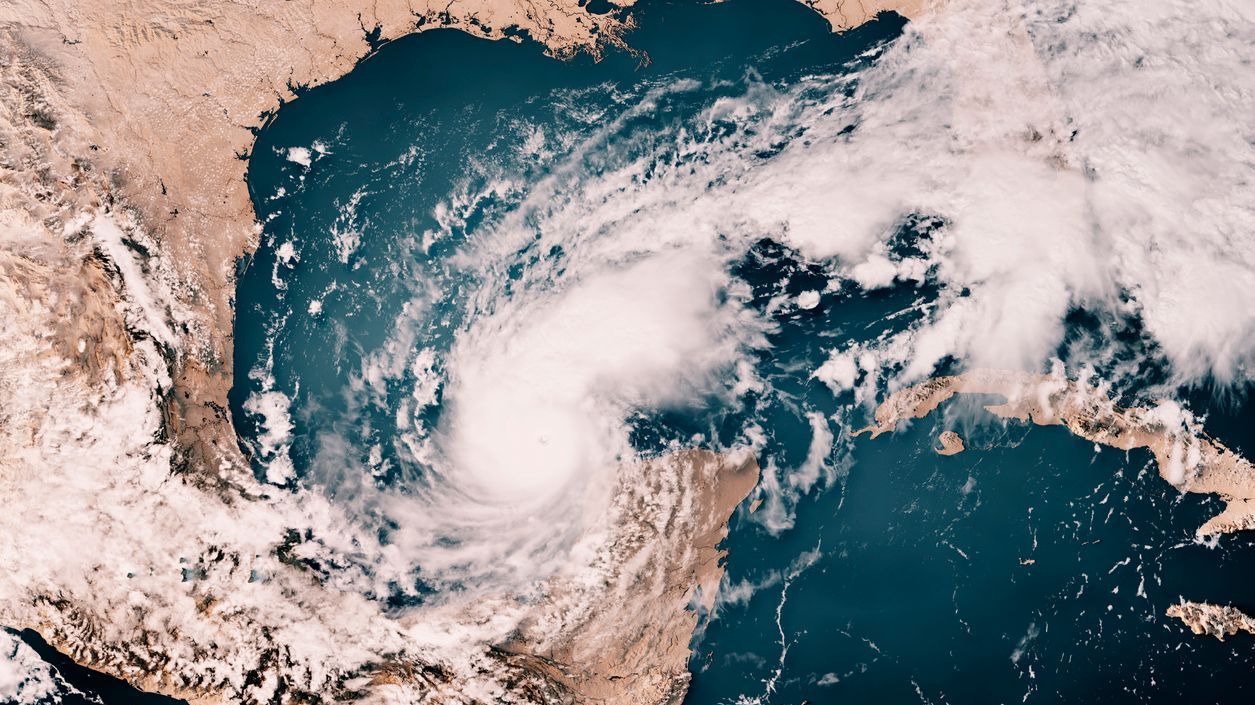The 2024 hurricane season has been highly active and disruptive, with notable events like hurricanes Helene and Milton wreaking havoc across the Southeastern U.S. With such significant weather patterns impacting businesses, MSPs must proactively safeguard their clients and their own operations.
For MSPs, hurricanes and severe weather events aren’t just natural occurrences. They represent both potential risks and revenue opportunities. In this guide, we’ll outline how MSPs can navigate a turbulent season by adopting disaster preparedness measures, supporting their clients, and seizing opportunities to offer enhanced services.
No. 1: Threats MSPs Face During Hurricane Season
Hurricanes and tropical storms present myriad threats, not only to MSPs’ clients but to themselves. These weather events can cause:
- Power Outages: Extended power loss can cripple businesses, especially those that rely on physical infrastructure for their operations.
- Data Loss: Businesses that lack proper backup and disaster recovery (DR) plans risk losing critical data when systems go down.
- Disruption of Business Operations: Flooding, building damage, and communication breakdowns can significantly affect a business’ ability to run.
- Increased Cybersecurity Risks: Severe weather can create gaps in security, as teams focus on physical survival rather than digital defense.
MSPs face the challenge of ensuring both their own business continuity and the continuous, secure operation of their clients’ IT environments during these challenging times.
>>> Your partners can make or break your MSP. Learn why with our FREE guide >>>
No. 2: How to Prepare for Hurricane Season
Being proactive is key to minimizing disruptions during hurricane season. Here are some critical steps that MSPs should take:
Conduct DR Drills
MSPs should run frequent DR drills for both their own internal systems and clients’. These drills should simulate realistic disaster scenarios to ensure all staff and teams are prepared. Testing backup and recovery systems is vital to ensure that they can respond to outages and system failures quickly.
- Internal Drills: Regularly simulate hurricane-related outages to test backup solutions, failover systems, and remote access capabilities.
- Client-focused Drills: Work with clients to test their DR plans and their ability to switch operations to alternative locations or work remotely during a crisis.
Ensure Backup Solutions are Up to Date
MSPs must regularly back up clients’ data. Also, they must ensure that backup systems are capable of fast recovery. Cloud-based backups are preferable, as they are accessible even if on-premises infrastructure is compromised. Additionally, all systems should be tested for quick failover to alternative data centers or cloud environments during an emergency.
Establish Proactive Communication Channels
In the days leading up to a potential disaster, it’s essential to clearly and constantly communicate with clients. MSPs should:
- Set up automated alert systems to inform clients of real-time risks.
- Prepare clear communication protocols for pre-disaster warnings and post-DR updates.
- Provide a hotline or dedicated support channel for emergency services.
Review and Update SLAs
Disasters often bring to light ambiguities in contracts and expectations. MSPs should review their service level agreements (SLAs). Ensure that they explicitly cover disaster scenarios, such as outlining what constitutes “emergency response” and the specific services clients can expect in such situations. Communicate these terms clearly to clients before hurricane season to avoid disputes during a crisis.
Protect Your Own Business
Ensure that your own operations stay functional during hurricanes. This includes establishing redundant internet connections, backup power systems (generators, uninterruptible power supplies, etc.), and staff remote work policies. By maintaining operational resilience, MSPs can continue delivering services to clients during severe weather events.
Useful Resources for MSPs During Hurricane Season
Below are some valuable links to resources from leading organizations that can help MSPs prepare for and respond to hurricanes and severe weather events.
1. FEMA (Federal Emergency Management Agency)
Website: FEMA.gov
What You’ll Find: FEMA provides extensive disaster management resources, including hurricane preparedness tips, business continuity planning guides, and up-to-date information on disaster declarations.
2. National Hurricane Center (NHC)
Website: nhc.noaa.gov
What You’ll Find: Real-time tracking of hurricanes and tropical storms, along with forecast maps and warnings.
3. American Red Cross
Website: redcross.org
What You’ll Find: Resources for disaster relief, emergency shelters, and safety tips for hurricanes.
4. Ready.gov
Website: ready.gov
What You’ll Find: Emergency preparedness tools for businesses, including planning guides and templates.
5. Department of Energy (DOE)
Website: energy.gov/ceser
What You’ll Find: Information on energy security and resilience during natural disasters, focusing on critical infrastructure.
No. 3: How MSP Customers Should Prepare
The role of an MSP is to guide and assist clients through preparing for hurricane season. Here’s how MSP customers should work with their providers to strengthen their disaster preparedness:
Create a Comprehensive BCP
A robust business continuity plan (BCP) is the first line of defense against disaster-related interruptions. Customers should collaborate with their MSPs to develop a plan that includes:
- Procedures for continuing operations if physical office spaces become inaccessible
- Identifying critical employees and ensuring they have access to the tools they need for remote work
- Planning for communication and data access redundancies
Test Backup Systems Regularly
Backup systems are only effective if they work when needed. MSPs should work closely with customers to schedule regular tests of their backup solutions, ensuring that all data can be quickly restored in the event of a loss. Both cloud-based and on-premises backups should be tested for speed and efficiency.
Assess On-premises Infrastructure for Vulnerabilities
Customers with on-premises servers or infrastructure should be vigilant about flood risks, storm damage, and other physical vulnerabilities. Working with MSPs, they should identify critical infrastructure at risk and take steps to mitigate damage. This can include relocating servers to safer locations or investing in physical protection like server cages and environmental monitoring systems.
Identify Critical Applications for Recovery
MSPs should help customers map out which applications and data are critical to business operations and need to be prioritized for recovery. This ensures that during an outage or disaster, recovery efforts focus on restoring essential systems first, minimizing downtime and losses.
No. 4: The Upside for MSPs During Hurricane Season
Hurricane season isn’t just a time for preparation. It’s also an opportunity for MSPs to offer new services and enhance existing ones. Key revenue opportunities include:
Disaster Recovery as a Service (DRaaS): Many businesses lack comprehensive DR plans. This offers a perfect opportunity for MSPs to step in with DRaaS offerings. By providing fully managed, cloud-based DR services, MSPs can offer peace of mind to clients while generating additional revenue streams.
Cloud-based Backup and Remote Work Solutions: For businesses reliant on physical offices, hurricanes highlight the need for cloud-based services. MSPs can upsell cloud backup solutions to ensure that data is accessible from anywhere, even if the office is flooded or inaccessible. Additionally, promoting remote work setups — including virtual desktops and secure VPNs — allows MSPs to address clients’ needs to maintain operations remotely during disasters.
Redundant Power and Internet Services: Businesses in high-risk areas will need help to maintain connectivity during storms. MSPs can offer managed power solutions, including uninterruptible power supplies (UPS) and backup generators, as well as solutions like mobile failover services or satellite connections.
No. 5: Next Steps for MSPs to Protect Their Business and Employees
MSPs must ensure their own business continuity during hurricane season, just as they help their clients. This means safeguarding internal operations, communications, and teams. Here are the next steps:
Review Current DR Plans: MSPs should conduct an internal audit of their DR and BCPs. Ensure that your own backup systems are functioning correctly, and that your IT infrastructure is protected against weather-related risks.
Prepare Employees for Remote Work: Just as clients may need to switch to remote operations, so, too, must MSP staff. Equip your employees with the necessary tools and secure access to support clients during a disaster. Create a rotating support team schedule to ensure full coverage even if employees are directly affected by the storm.
Engage Clients Early: Work with clients ahead of severe weather forecasts. Offer consultations on disaster preparedness, communicate the risks, and market your DRaaS, cloud backup, and redundant connectivity solutions as essential services for this time of year.
Market Weather-related Services: Develop a focused marketing campaign around DR, business continuity, and weather-proofing solutions. Emphasize how these services can minimize downtime and financial losses. Create urgency by highlighting the active 2024 hurricane season and the importance of acting before storms hit.
Conclusion
Now is the time for MSPs and their clients to prepare for the worst. By taking a proactive stance, MSPs can mitigate risks, ensure operational continuity, and even generate new revenue by offering disaster-focused solutions.
Preparedness is not only a business necessity but an opportunity to strengthen client relationships and differentiate MSPs from competitors. By focusing on DR, cloud services, and business continuity, MSPs can help their clients weather the storm — literally and figuratively — while safeguarding their own businesses.
MSP Hurricane Preparedness Checklist (for Your Own Business)
-
- □ Conduct internal DR drills to simulate outages and test recovery processes.
- □ Ensure all data backups (cloud and local) are current and fully functional.
-
- □ Verify that uninterruptible power supplies (UPS) and backup generators are in place and ready.
- □ Test all backup power sources regularly.
-
- □ Ensure redundant internet solutions, such as secondary ISPs or mobile failover, are configured.
- □ Test failover systems to ensure automatic switching works seamlessly.
-
- □ Confirm all employees have access to secure remote work tools (VPN, collaboration software).
- □ Create a rotating schedule for support teams in case employees are directly affected.
-
- □ Set up proactive communication channels for real-time client updates (email, SMS, etc.).
- □ Develop internal and external emergency communication protocols.
-
- □ Ensure SLAs clearly outline disaster response services and client expectations.
- □ Communicate these SLA terms with clients before hurricane threats arise.
- □ Establish guidelines for employee safety during storms, including remote work protocols.
- □ Create a plan to maintain operations if local offices are affected.
Client Hurricane Preparedness Checklist
-
- □ Review the client’s BCP to ensure all critical systems and employees are covered.
- □ Ensure the plan includes remote work capabilities and communication redundancies.
-
- □ Confirm that the client’s backup solutions are functional, with regular, automated backups.
- □ Test recovery processes to ensure rapid restoration of critical systems.
-
- □ Identify vulnerable on-premises infrastructure (e.g., servers in flood zones).
- □ Recommend relocating critical systems to safer environments or moving to the cloud.
-
- □ Ensure the client has backup power solutions (UPS, generators) in place.
- □ Verify redundant internet solutions, such as failover ISPs or mobile connections.
-
- □ Work with the client to identify mission-critical applications that must be restored first.
- □ Ensure disaster recovery plans focus on rapid recovery of these systems.
-
- □ Establish clear lines of communication between MSP and client for disaster updates.
- □ Set up emergency contact protocols for critical incidents.
- □ Schedule a meeting with the client to review all disaster recovery plans.
- □ Offer to provide disaster recovery as a service (DRaaS) if they lack sufficient plans.
ChannelPro has created this resource to help busy MSPs streamline their decision-making process. This resource offers a starting point for evaluating key business choices, saving time and providing clarity. While this resource is designed to guide you through important considerations, we encourage you to seek more references and professional advice to ensure fully informed decisions.
Featured image: iStock















